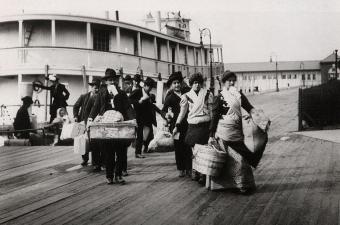U.S. Data
Recent Activity
Recent Activity
The 1.1 million Salvadoran immigrants residing in the United States in 2008 accounted for 2.9 percent of all U.S. immigrants, making them the second-largest immigrant group from Latin America. MPI's Aaron Terrazas examines their socioeconomic characteristics, where they live, and the size of the Salvadoran-born unauthorized population.
Mexico's efforts to help its migrants succeed in the U.S. offer a new example of an immigrant-sending country looking to improve its emigrants' lives and connect with its diaspora. This report examines Mexico's approach to its migrants and details the activities of the government's attempt to map the expanding range of its educational, health care, financial, and civic programs.
The 18.9 million immigrant women in the United States in 2008 made up 12 percent of all women in the country. MPI's Jeanne Batalova examines which countries they come from, their labor force participation, and their socioeconomic status.
In 2008, there were just under 800,000 apprehensions, the lowest number since 1975. MPI's Kristen McCabe and Jeanne Batalova take a detailed look at the latest immigration enforcement statistics.
There were nearly 40 million temporary admissions to the United States in 2008, more than twice the number in 1990. MPI's Jeanne Batalova outlines the definition of nonimmigrants and takes a detailed look at admissions data and data limitations.
This report, commissioned by the BBC World Service, seeks to explore the myriad impacts of the global financial crisis that began in September 2008 on migration flows, immigration policies, remittances, and on migrants themselves. Select countries and regions are examined in detail to highlight overarching trends and regional differences.
Over one million immigrants—one-third from Mexico, India, and the Philippines—became U.S. citizens in 2008. MPI's Jeanne Batalova takes a detailed look at the latest naturalization trends in the United States.
In 2008, the United States raised the ceiling on refugee admission by 10,000, admitted more than 60,000 refugees for resettlement, and granted asylum to nearly 23,000 people. MPI's Jeanne Batalova takes a detailed look at refugee and asylum statistics in the United States.




